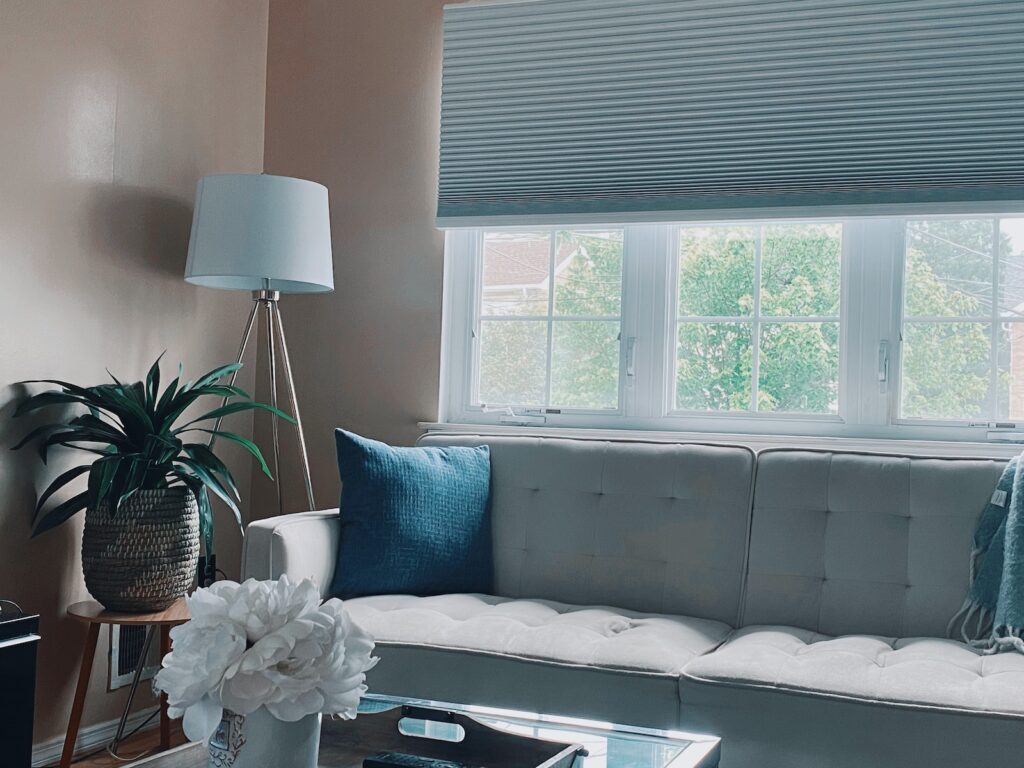When it comes to window treatments, there are a lot of options to choose from. One common debate among homeowners is whether or not blinds should be flush with the window. Some argue that this creates a cleaner, more streamlined look, while others believe that a small gap between the blinds and the window is necessary for proper function. So, should blinds be flush with window? Let’s explore the pros and cons of each approach.
Having blinds flush with the window can create a sleek, modern appearance. It can also help to reduce drafts and light leakage. However, some argue that having a small gap between the blinds and the window can allow for better air circulation and prevent moisture buildup. So, which approach is best? Let’s dive deeper into the benefits and drawbacks of each option.

Should Blinds Be Flush With Window?
Blinds are a great way to enhance the aesthetics of a room while providing privacy and light control. But, when it comes to installing them, one question that often arises is whether they should be flush with the window or not. In this article, we’ll explore the pros and cons of both approaches to help you make an informed decision.
Flush with Window
Blinds that are flush with the window have a neat and streamlined appearance. This installation style involves mounting the blinds on the inside of the window frame, so they sit flush with the glass. One of the main benefits of this approach is that it maximizes the window’s natural light. Because the blinds are situated inside the frame, there is no gap between the glass and the blinds, which allows for more light to come through.
Another advantage of flush blinds is that they can make a small room appear larger. Because the blinds don’t protrude from the window, they create a more spacious and open feel. Additionally, flush blinds are less likely to collect dust and debris, making them easier to clean and maintain.
However, there are also some downsides to consider. Flush blinds can be more difficult to install, especially if the window frame is not perfectly square. Additionally, there may be gaps between the blinds and the frame, which can allow light and drafts to come through. Finally, flush blinds may not provide as much insulation as blinds that sit outside the frame.
Not Flush with Window
Blinds that sit outside the window frame are mounted on the wall or window trim, rather than inside the frame. This installation style allows the blinds to extend beyond the window, providing additional coverage and privacy. Additionally, blinds that sit outside the frame can be easier to install, as there is more room to work with.
Another advantage of non-flush blinds is that they can provide better insulation. Because they sit outside the frame, they can create a barrier between the window and the room, reducing heat loss and drafts. Additionally, non-flush blinds can be more effective at blocking light, as they can be mounted higher and wider than flush blinds.
However, there are also some drawbacks to consider. Non-flush blinds can collect more dust and debris, as they are more exposed to the room. Additionally, they can make a small room feel even smaller, as they take up additional space. Finally, non-flush blinds can be more difficult to clean and maintain.
Benefits of Flush vs. Non-Flush Blinds
To summarize, here are some of the benefits of flush and non-flush blinds:
Benefits of Flush Blinds:
- Maximize natural light
- Create a streamlined appearance
- Easier to clean and maintain
Benefits of Non-Flush Blinds:
- Provide additional coverage and privacy
- Can provide better insulation
- Can be more effective at blocking light
The Final Word
So, should blinds be flush with the window? Ultimately, the decision comes down to personal preference and the specific needs of your space. Flush blinds are a great choice for those who want to maximize natural light and create a streamlined appearance. Non-flush blinds are a good option for those who want additional coverage, privacy, and insulation. Whatever your choice, be sure to measure carefully and choose blinds that fit your window properly.
Frequently Asked Questions
Here are some common questions about the proper installation of blinds.
What does it mean for blinds to be “flush” with the window?
When blinds are flush with the window, they sit inside the window frame and are mounted directly against the glass. This means that there is no gap between the blinds and the window, and no light can enter through the sides or top of the blinds.
Having blinds that are flush with the window can provide better insulation and light-blocking capabilities, as well as a cleaner, more polished look.
What are the benefits of having blinds that are flush with the window?
One benefit of having blinds that are flush with the window is better insulation. Without any gaps between the blinds and the window, there is less air flow, which can help keep a room warmer in the winter and cooler in the summer.
Additionally, having blinds that are flush with the window can provide better light control, as there are no gaps for light to shine through. This can be especially important for bedrooms or other areas where you want to minimize light for better sleep or privacy.
Can blinds be mounted outside the window frame?
Yes, blinds can be mounted outside the window frame. This is called an “outside mount” and involves mounting the blinds on the wall above or beside the window instead of inside the frame.
While an outside mount can be a good option for windows that are too shallow to accommodate an inside mount, it can result in more light leakage around the edges of the blinds and may not provide as clean of a look as an inside mount.
What is the standard depth of a window frame for an inside mount?
The standard depth of a window frame for an inside mount is typically at least 2 inches. This allows enough space for the blinds to fit inside the frame without touching the glass and provides enough clearance for any window hardware or handles.
However, the depth of a window frame can vary depending on the type of window, so it’s important to measure carefully before ordering blinds for an inside mount.
What should I do if my window frame is not deep enough for an inside mount?
If your window frame is not deep enough for an inside mount, you may need to consider an outside mount or look for blinds with a shallower profile. Some blinds are designed specifically for shallow windows and can be mounted with brackets on the outside of the frame.
Alternatively, you could also consider replacing your window with a deeper frame that can accommodate an inside mount.
TOP 5 MISTAKES EVERYONE IS MAKING WITH WINDOWS! (Even The Pros)
In conclusion, the question of whether blinds should be flush with the window is a matter of personal preference and specific circumstances. While some may prefer a sleek and seamless appearance, others may value the added insulation and light-blocking capabilities of an outside mount. It is important to consider factors such as the type of window, the style of the room, and the intended function of the blinds before making a decision.
Ultimately, the decision to mount blinds inside or outside the window frame is yours to make. Take the time to evaluate your options and consider the benefits and drawbacks of each approach. Whether you choose an inside or outside mount, the right blinds can add style, privacy, and functionality to any room in your home. So go ahead and make your choice with confidence, knowing that you have made a decision that is right for you and your space.


